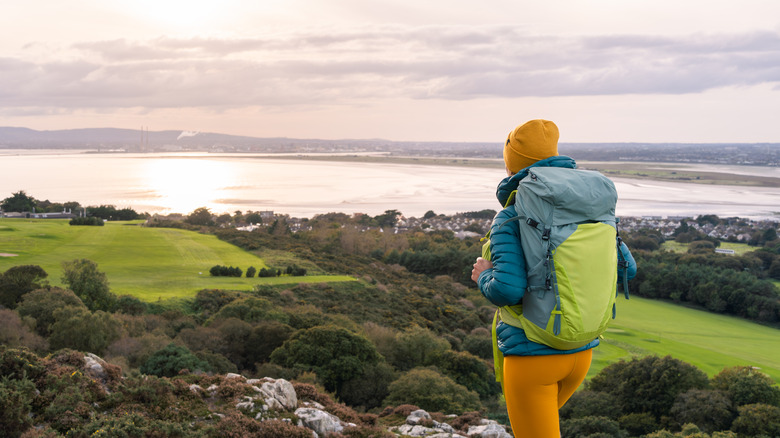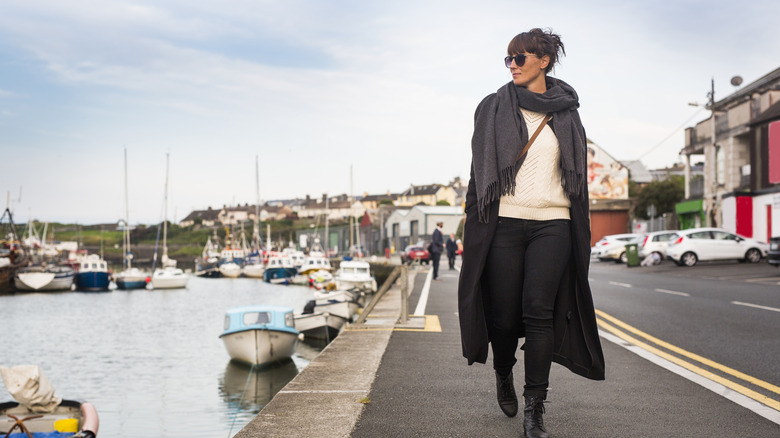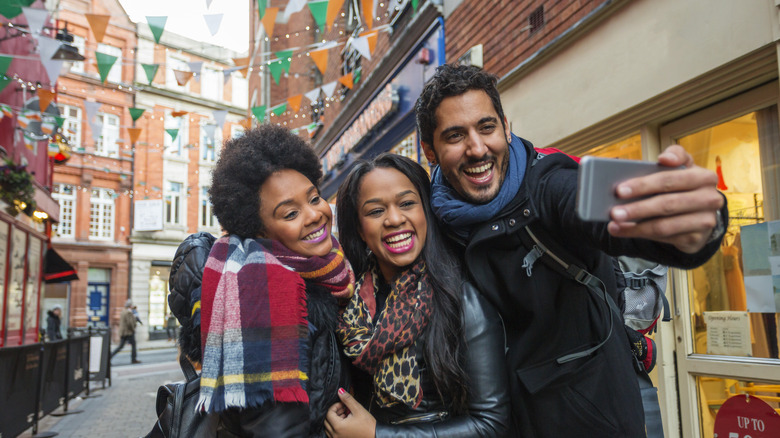Why Tourists Need To Be Cautious Of The Clothing They Pack For A Trip To Ireland
There's a popular saying that's attributed to many countries, and it's especially true of Ireland: "There's no such thing as bad weather — only bad clothes." During my travels around Ireland, I've heard locals say it countless times, whenever the weather begins to look a little gloomy. In a country with ever-changing weather and around 150 rainy days per year, it's easy to see why the saying caught on.
Ireland offers some of the most incredible European scenery, and yes, that includes on rainy days, too. In fact, the rain in Ireland is a particularly magical experience, often resulting in rainbows over the lush green rolling hills. Temperatures remain mild throughout the year, but the weather can be unpredictable. Sunshine and blue skies can be deceiving, and rain clouds can roll in at any given moment. Temperatures can rise and drop in a matter of hours. There are also some cultural considerations travelers should be aware of — and some clothing items that are best left at home. Packing appropriately is a crucial part of preparing for any vacation. As you plan your trip to Ireland, ensure that you have everything you need to stay comfortable throughout your travels.
Prepare for all kinds of weather in Ireland
My mom loves to remind me of the popular Irish saying whenever I'm packing for a trip. During our first trip to Ireland, I made the unfortunate decision to leave my raincoat in the car on a day hike along the Irish coast, which resulted in me getting soaked to the bone. I was shivering for the entire hike home, while my mother remained comfortably dry — and I doubt I'll ever live it down. Lesson learned. In Ireland, it's a good idea to pack clothing for all types of conditions, and you should always expect at least a little rain. Regardless of the season, you should bring along a few warm layers and rain gear. Even during the warmest months, temperatures usually hover between 60 and 70 degrees, and the nights can sometimes feel a bit chilly.
If you're planning on enjoying Ireland's beautiful countryside, pack a sturdy pair of waterproof boots and a rain jacket that can double as a windbreaker. If you're sticking to stylish cities like Dublin, you can never go wrong with a classic black or beige waterproof trench coat and a pair of comfortable all-weather ankle boots. Burberry makes a beautiful splurge-worthy raincoat, and London Fog offers some excellent affordable versions. It never hurts to have a packable poncho on hand to throw in your daypack or purse, as well. An oversized travel scarf is useful because it packs up small and can be used as a stylish accessory, a blanket for the train, or an extra warm layer.
Be sensitive to local customs
Depending on where you're from, you may feel that the people of Ireland are somewhat conservative in their style of dress. While you're sure to spot all of the current fashion trends if you're exploring Dublin, you may want to err on the side of caution and leave the super-revealing clothing items at home, especially if you plan to visit the countryside. Wearing skimpy clothing could definitely attract negative attention, especially among the older and more conservative locals. Super-short skirts, dresses, and shorts should also be avoided. There's no point in potentially offending someone, and it's probably not going to be warm enough to wear them anyway. Swimsuits are acceptable on the beach, but shouldn't be worn in town.
Ireland is known for its beautiful cobblestone streets, which make walking in high heels extremely difficult. If you do choose to bring them, opt for options with thicker block heels so that you don't twist an ankle on the uneven terrain. Trust me, I learned the hard way.
Political clothing, like slogans and flags, are also best left at home — especially those that depict the Union Jack flag. Ireland has a complicated history with the United Kingdom. Northern Ireland is part of the U.K., while the Republic of Ireland remains independent. Political conflicts between the two countries lasted until the late 1990s. While violence has ceased, it's still a sore spot, especially for those who lived through those times or lost loved ones due to political violence.


